Partition Museum is a museum located in Amritsar, Punjab, India. It was established in 2016 to commemorate the partition of India and Pakistan in 1947. The museum was founded by The Arts and Cultural Heritage Trust (TAACHT), a non-profit organization dedicated to the preservation of art, culture, and heritage. The museum is situated inside the historic Town Hall building in Amritsar, which was used as a refugee camp during the partition.
The Partition Museum is the first museum of its kind that documents the partition of India. It showcases the human cost of partition through personal stories, artefacts, and interactive exhibits. The museum aims to create awareness about the partition and its impact on the lives of millions of people who were affected by it. It also aims to promote peace and harmony between India and Pakistan.
The museum has become a popular tourist attraction and has received accolades from visitors and scholars. It has been featured in several international media outlets and has won several awards for its contribution to preserving history and promoting peace. The Partition Museum is a symbol of hope and reconciliation and serves as a reminder of the importance of learning from history to avoid repeating the mistakes of the past.
Historical background of Partition of India
The partition of India refers to the division of British India into two separate and independent countries, India and Pakistan, in 1947. The partition was a consequence of the political and religious divide between the Hindu and Muslim communities in India, which had been growing for decades.
The Indian independence movement, led by the Indian National Congress, had been pushing for the independence of India from British rule for several years. However, the demand for a separate homeland for Muslims grew stronger, led by the All India Muslim League, which feared that the Muslim minority in India would be dominated by the Hindu majority in an independent India.
The British government, led by Lord Mountbatten, proposed a plan to divide India into two countries based on religious lines. The plan was accepted by the Indian National Congress and the All India Muslim League, and the Indian Independence Act was passed by the British Parliament in July 1947, which granted independence to India and Pakistan.
The partition led to the largest mass migration in human history, with millions of Hindus, Muslims, and Sikhs displaced from their homes and forced to migrate to either India or Pakistan. The violence and bloodshed that followed the partition resulted in the deaths of millions of people, with estimates ranging from 200,000 to 2 million. The partition had a profound impact on the political, social, and cultural fabric of India and Pakistan and its effects are still felt today.
Why Partition Museum was built?
Partition Museum was built to commemorate the partition of India and to document the human cost of this historic event. The museum was established to serve as a platform for the preservation of the memories, stories, and experiences of people who were affected by the partition.
The founders of the museum recognized the importance of preserving the memories and experiences of those who lived through the partition. They believed that documenting these stories and experiences would help future generations understand the impact of partition on the lives of millions of people.
Furthermore, the founders of the museum believed that the partition of India was a significant event in world history, and it deserved to be documented and studied in detail. They recognized that the partition had a profound impact on the political, social, and cultural fabric of India and Pakistan, and it was important to create a space that would serve as a reminder of this historic event.
The museum also aims to promote peace and understanding between India and Pakistan. It is hoped that by documenting the partition and its impact on people’s lives, the museum will help foster greater understanding and empathy between the two countries. The museum serves as a symbol of hope and reconciliation and encourages visitors to learn from the past to build a better future.
Who founded Partition Museum?
The Partition Museum was founded by The Arts and Cultural Heritage Trust (TAACHT), a non-profit organization based in Amritsar, Punjab, India. TAACHT was established by Kishwar Desai, a writer and social activist, and her husband, Lord Meghnad Desai, an economist and member of the British House of Lords.
Kishwar Desai, who was born in Amritsar, was deeply moved by the stories of partition survivors and recognized the need to document their experiences. She founded TAACHT with the aim of promoting art, culture, and heritage, and preserving the memories of the partition.
TAACHT received support from various individuals and organizations, including the Punjab government, the Indian National Trust for Art and Cultural Heritage (INTACH), and the UK Punjab Heritage Association. With their help, the organization was able to acquire the historic Town Hall building in Amritsar and convert it into the Partition Museum.
Today, the museum is managed by a team of professionals and volunteers who work to preserve and showcase the history of partition. It has become a popular tourist attraction and a center for research and scholarship on the partition of India.
Funding for Partition Museum
The Partition Museum is a non-profit organization and relies on donations and grants for its funding. The museum was established by The Arts and Cultural Heritage Trust (TAACHT), a non-profit organization that was founded by Kishwar Desai and Lord Meghnad Desai.
In addition to these contributions, the museum also receives donations from individuals, corporations, and philanthropic organizations. The museum has a donor program that allows individuals to contribute towards specific projects, such as the preservation of artefacts or the development of educational programs.
The museum also generates revenue through ticket sales and merchandise sales. Visitors to the museum pay an admission fee, and the museum shop sells books, postcards, and other items related to the partition.
Overall, the funding for the Partition Museum is a collaborative effort, with support coming from a variety of sources. The museum’s success is a testament to the dedication and commitment of its founders, donors, and volunteers who work tirelessly to preserve the memories and stories of partition survivors.
Artefacts displayed in Partition Museum
The Partition Museum in Amritsar houses a vast collection of artefacts related to the partition of India in 1947. These artefacts have been donated by individuals and families who were affected by the partition and serve as a powerful reminder of the human cost of this historic event. Here are some examples of the artefacts displayed in the museum:
- Personal belongings: The museum displays personal belongings of partition survivors, such as clothes, jewellery, and household items. These artefacts provide a glimpse into the lives of people who were affected by the partition.
- Letters and documents: The museum has a collection of letters and documents that were written by people during the partition. These include letters between family members who were separated during the migration, government documents related to the partition, and legal papers.
- Photographs: The museum has a large collection of photographs that document the events leading up to the partition and its aftermath. These photographs capture the human tragedy of the partition and provide a visual record of the events.
- Oral histories: The museum has an extensive collection of oral histories recorded from partition survivors. These stories provide a personal and emotional account of the partition and its impact on people’s lives.
- Art and literature: The museum displays artwork and literature related to the partition. This includes paintings, poetry, and prose that were created by partition survivors and provide a creative interpretation of the events.
Interactive exhibits in partition museum
The Partition Museum in Amritsar features several interactive exhibits that engage visitors and provide a deeper understanding of the events surrounding the partition of India. These exhibits use a range of multimedia tools and technologies to create an immersive and educational experience. Here are some examples of the interactive exhibits in the museum:
- 3D video mapping: The museum has a 3D video mapping exhibit that uses projection technology to bring to life the events surrounding the partition. Visitors can witness the movement of people and the changing boundaries of India and Pakistan.
- Soundscapes: The museum has soundscapes that recreate the sounds of the partition, such as the sound of a train carrying refugees or the chaos of a riot. These soundscapes provide an emotional and immersive experience for visitors.
- Digital archives: The museum has a digital archive that contains thousands of documents, photographs, and oral histories related to the partition. Visitors can access this archive and explore the personal stories of partition survivors.
- Interactive touch screens: The museum has interactive touch screens that allow visitors to explore various aspects of the partition. These screens provide access to maps, timelines, and historical documents, and allow visitors to create their own virtual exhibit.
- Holographic exhibits: The museum has a holographic exhibit that features life-size projections of partition survivors sharing their stories. This exhibit provides an intimate and personal connection with the people who lived through the partition.
13 Popular Historical Places in Amritsar – Travel India Travel
Sections of Partition Museum
The Partition Museum in Amritsar is divided into several sections, each focusing on different aspects of the partition of India. These sections provide a comprehensive and nuanced view of the events leading up to the partition, the partition itself, and its aftermath. Here are some examples of the sections of the museum:
- Prelude to Partition: This section of the museum focuses on the events that led up to the partition, including the British colonial rule, the Indian independence movement, and the religious tensions between Hindus and Muslims.
- Migration: This section of the museum explores the mass migration that took place during the partition, with millions of people uprooted from their homes and forced to flee to India or Pakistan.
- Independence and Partition: This section of the museum provides an overview of the partition itself, including the partition plan, the violence that erupted, and the role of the British government.
- Aftermath: This section of the museum examines the aftermath of the partition, including the resettlement of refugees, the impact on the economy and society, and the ongoing tensions between India and Pakistan.
- Remembering Partition: This section of the museum focuses on the process of remembering and memorializing the partition. It includes exhibits on the literature and art that emerged in response to the partition, as well as the efforts to preserve the memories and stories of partition survivors.
Each section of the Partition Museum features artefacts, multimedia exhibits, and interactive displays that provide a unique and personal perspective on the partition of India. The museum offers a comprehensive and immersive experience that engages visitors and promotes a deeper understanding of this historic event.
8 Famous Vegetarian Food And Desserts in Amritsar – Travel India Travel
Importance of Partition Museum
The Partition Museum in Amritsar is an important cultural institution that serves as a powerful reminder of the human cost of the partition of India. Here are some of the key reasons why the museum is important:
- Preserving history: The museum plays an essential role in preserving the history of the partition of India. It houses a vast collection of artefacts, documents, and oral histories related to the partition, ensuring that these important records are preserved for future generations.
- Educating the public: The museum provides a comprehensive and nuanced view of the partition of India, educating visitors about the historical, social, and political factors that led to the partition, as well as the human impact of this event.
- Promoting empathy and understanding: The Partition Museum promotes empathy and understanding by sharing the personal stories and experiences of partition survivors. This helps visitors connect with the human impact of the partition and fosters a deeper understanding of the complexities of this historic event.
- Honoring the victims and survivors: The museum serves as a memorial to the victims and survivors of the partition, providing a space for remembrance and reflection. It also celebrates the resilience and strength of the people who survived this traumatic event.
- Encouraging dialogue and reconciliation: The Partition Museum encourages dialogue and reconciliation by promoting a deeper understanding of the shared history of India and Pakistan. By learning about the events that led to the partition and its aftermath, visitors can develop a greater appreciation for the shared cultural heritage of these two nations.
Partition Museum Timings
The Partition Museum in Amritsar is open to visitors seven days a week, including on public holidays. The museum timings are as follows:
Monday to Saturday: 10:00 am to 6:00 pm Sunday and Public Holidays: 12:00 pm to 6:00 pm
The museum is closed on the following public holidays: Holi, Diwali, and Raksha Bandhan.
It’s worth noting that the last entry to the museum is at 5:00 pm. Visitors are encouraged to arrive early to ensure they have enough time to explore the museum fully. Additionally, visitors are advised to check the museum’s website or contact the museum directly for any changes in timings or closures due to unforeseen circumstances.
14 Best Hill Stations Near Amritsar For a Perfect Holiday – Travel India Travel
Partition Museum Amritsar Entry Ticket Cost
The Partition Museum in Amritsar has a nominal entry fee for visitors. The ticket prices for entry to the museum are as follows:
Indian Visitors: Adults: INR 30 Students (with valid ID card): INR 10
Foreign Visitors: Adults: INR 350 Students (with valid ID card): INR 150
It’s important to note that these prices are subject to change, and visitors are advised to check the museum’s website or contact the museum directly for up-to-date pricing information.
Additionally, the museum offers special rates for group tours and educational visits. Visitors can contact the museum directly to learn more about these rates and to make arrangements for group visits.
How To Reach Partition Museum
The Partition Museum is located in the city of Amritsar in the northern Indian state of Punjab. Here are some of the ways visitors can reach the museum:
- By Air: The nearest airport to Amritsar is the Sri Guru Ram Das Jee International Airport, which is located about 11 kilometers from the city center. Visitors can take a taxi or hire a car from the airport to reach the museum.
- By Train: Amritsar is well connected by train to major cities in India, including Delhi, Mumbai, and Kolkata. The Amritsar Junction railway station is located about 2 kilometers from the museum. Visitors can take a taxi or auto-rickshaw from the station to reach the museum.
- By Bus: Amritsar is also well connected by bus to major cities in the region. The nearest bus stand to the museum is the Amritsar Bus Stand, which is located about 2.5 kilometers from the museum. Visitors can take a taxi or auto-rickshaw from the bus stand to reach the museum.
- By Car: Visitors can also reach the museum by car or taxi. Amritsar is well connected by road to major cities in the region, including Delhi, Chandigarh, and Jalandhar. The museum is located in the heart of the city, near the Golden Temple, and can be easily reached by car or taxi.
Maharaja Ranjit Singh Museum Timings, Entry Fee, History and More – Travel India Travel
Best Time To Visit Partition Museum
The Partition Museum in Amritsar can be visited year-round, but there are certain times of the year that may be more favorable for visitors. Here are some things to consider when planning a visit to the museum:
- Weather: Amritsar experiences hot summers and cool winters, with temperatures ranging from 25°C to 45°C in the summer and 5°C to 20°C in the winter. The best time to visit the museum may be during the cooler months of October to March when temperatures are more comfortable for outdoor activities.
- Holidays and Festivals: Amritsar is a popular destination for tourists and pilgrims, especially during holidays and festivals such as Diwali, Holi, and the Sikh festival of Vaisakhi. Visitors may want to avoid visiting the museum during these times, as it may be crowded and difficult to find accommodations.
- Museum Hours: The museum is open from 10:00 am to 6:00 pm on weekdays and from 12:00 pm to 6:00 pm on Sundays and public holidays. Visitors may want to plan their visit during these hours to ensure that they have enough time to explore the museum fully.
- Special Events: The museum hosts a variety of special events throughout the year, including talks, workshops, and exhibitions. Visitors may want to check the museum’s website or social media pages to learn about upcoming events and plan their visit accordingly.
Tourist Places Near Partition Museum
Amritsar is a city with rich history and culture, and there are many other tourist places to visit in and around the city. Here are some popular tourist places near the Partition Museum:
Golden Temple
The Golden Temple is one of the most visited places in Amritsar and is located just a short walk away from the museum. It is a place of worship for Sikhs and is also open to visitors of all faiths.
Jallianwala Bagh
Jallianwala Bagh is a public garden located about 300 meters from the Partition Museum. It is a memorial to the hundreds of unarmed protesters who were killed by British troops in 1919.
Wagah Border
The Wagah Border is a border crossing between India and Pakistan, located about 28 kilometers from Amritsar. Visitors can witness the daily flag-lowering ceremony that takes place at the border.
Durgiana Temple
The Durgiana Temple is a Hindu temple located about 2.5 kilometers from the Partition Museum. It is dedicated to the goddess Durga and is a popular place of worship for Hindus.
Ram Bagh
Ram Bagh is a beautiful garden located about 4 kilometers from the museum. It was built by Maharaja Ranjit Singh and is home to many rare and exotic plants.
These are just a few of the many tourist places near the Partition Museum in Amritsar. Visitors may want to explore the city further to discover more of its history, culture, and beauty.
Tarn Taran Sahib Timings, Significance, History and More – Travel India Travel
Gobindgarh Fort Timings, Entry Fee, Cost, History and More – Travel India Travel
The Partition Museum in Amritsar is a significant and poignant tribute to the history and legacy of the Partition of India in 1947. Through its extensive collection of artifacts, interactive exhibits, and personal stories, the museum offers visitors a deeper understanding of the trauma and upheaval experienced by millions of people during this pivotal moment in history.
The museum also serves as a reminder of the importance of promoting peace, understanding, and tolerance between different communities, and the need to learn from the lessons of the past.
Overall, the Partition Museum is a must-visit destination for anyone interested in the history and culture of India, and it is a fitting tribute to the resilience and spirit of the people who lived through this challenging time.
Frequently Asked Questions About Partition Museum
What is the Partition Museum?
The Partition Museum is a museum dedicated to the history and legacy of the Partition of India in 1947. It is located in the city of Amritsar in the Indian state of Punjab.
What are the museum hours of operation?
The museum is open from 10:00 am to 6:00 pm on weekdays and from 12:00 pm to 6:00 pm on Sundays and public holidays.
What are some of the artifacts on display at the museum?
The museum features a wide range of artifacts, including photographs, documents, personal items, and audio and video recordings related to the Partition of India.
Are there interactive exhibits at the museum?
Yes, the museum has several interactive exhibits that allow visitors to engage with the history of the Partition in a more immersive way.
Is photography allowed in the museum?
Photography is allowed in some areas of the museum, but not in all. Visitors are advised to check with museum staff before taking any photographs.
What are some other tourist places to visit near the Partition Museum?
Some popular tourist places near the museum include the Golden Temple, Jallianwala Bagh, Wagah Border, Durgiana Temple, and Ram Bagh.
Is the museum accessible for people with disabilities?
Yes, the museum is fully accessible for people with disabilities. It has ramps, elevators, and other facilities to ensure that all visitors can enjoy the exhibits.
How long does it take to visit the museum?
Visitors typically spend between 2-3 hours at the museum, but the length of the visit may vary depending on individual interests and preferences.
What is the best time to visit the museum?
The museum can be visited year-round, but the best time to visit may be during the cooler months of October to March when temperatures are more comfortable for outdoor activities. Visitors may also want to avoid visiting during holidays and festivals when the museum may be crowded.


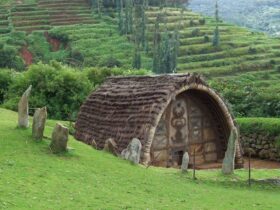

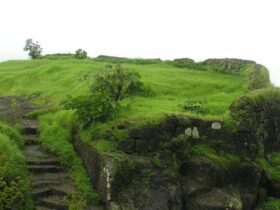
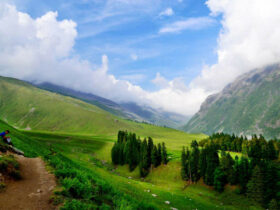
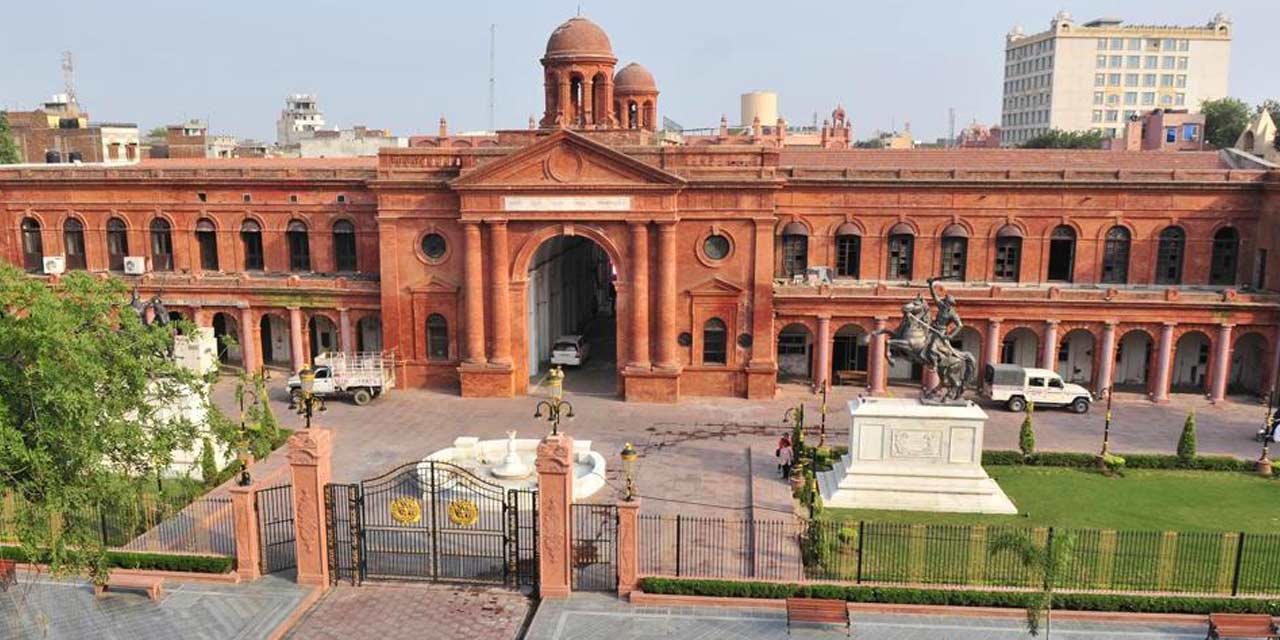
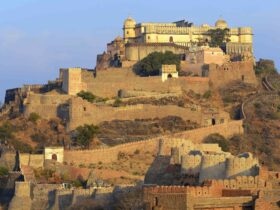
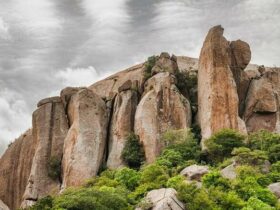
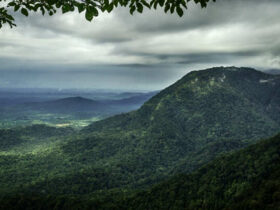
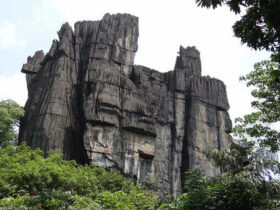
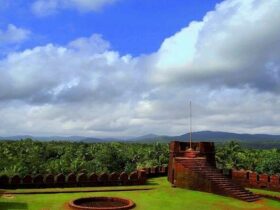
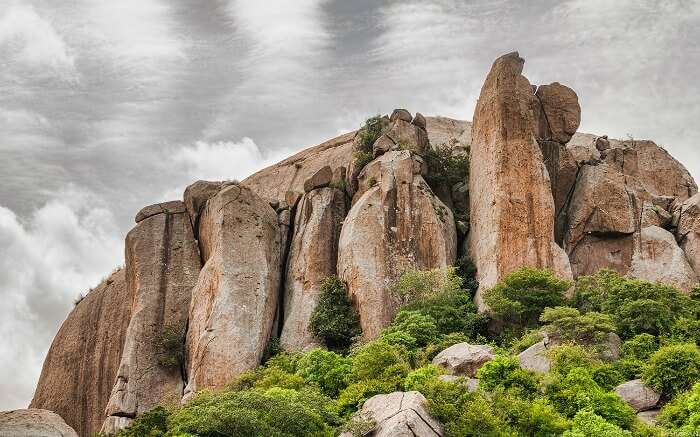
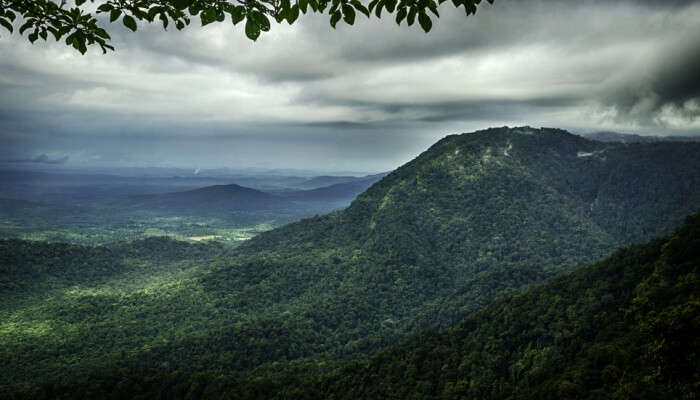
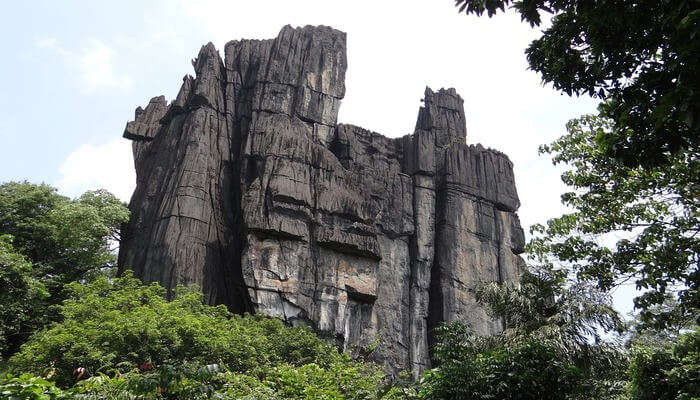
Leave a Reply
View Comments